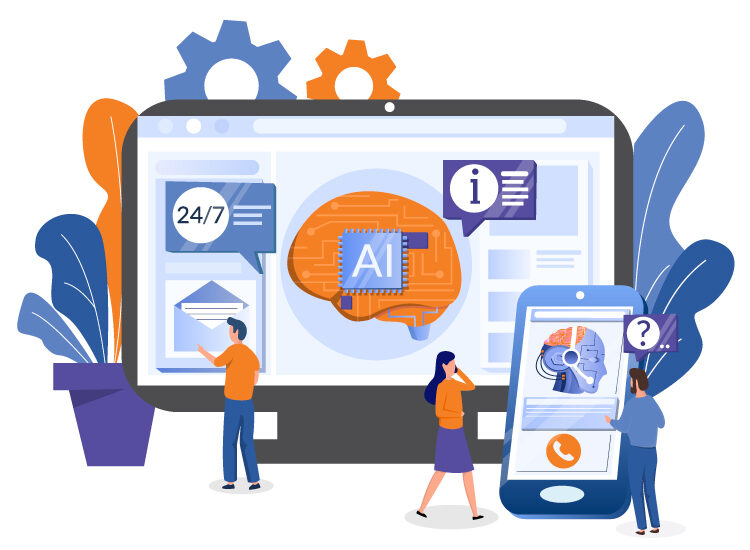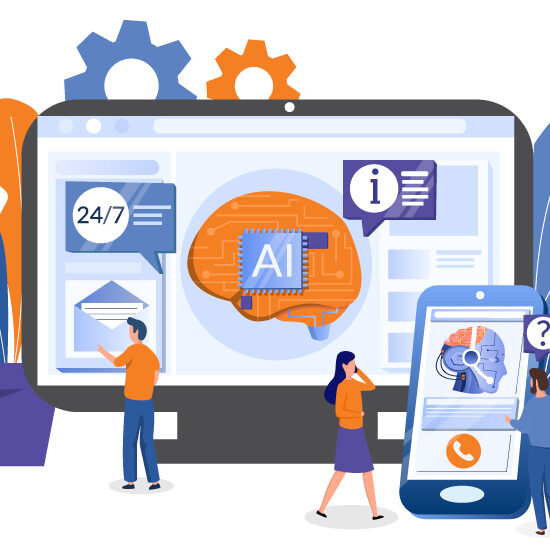In a recent Pricewaterhouse Cooper (PwC) survey of U.S. executives, 86% said AI was part of their mainstream technology in 2021. According to PwC, “AI is paying off in concrete ways, with benefits ranging from revenue growth to better decision-making and improved customer experiences.”
This blog will look at ten examples of how AI is helping businesses increase their productivity, profitability, and employee satisfaction. There are also risks to AI that require AI Ethics, as there is potential for abuse and/or significant errors that may have an adverse impact on every aspect of life that is touched by data.
What Is AI For Business and How Can It Be a Useful Tool?
The term artificial intelligence refers to software that completes tasks usually performed by humans. These tasks are often time-consuming, monotonous, complex, and error-prone.
AI software typically falls into three categories:
Machine Learning
Machine learning is a process that analyzes massive amounts of data and finds patterns and trends. It’s the most common form of AI for business. Machine learning algorithms get their name because the software can change over time based on past results.
Automation Frees Human Workers From Repetitive Tasks
Automation frees human workers from repetitive tasks. It can take a variety of forms, from factory robots on the assembly line to software tools that manage the workforce. With cloud-based platforms, even small businesses can automate many aspects of daily operations.
Natural Language Processing (NLP)
Natural Language Processing (NLP) lets AI software recognize human speech and understand spoken commands. It supports human engagement via tools like search engines, chatbots, and virtual assistants.
Many business applications use machine learning, automation, or NLP to boost productivity and efficiency. Here are some examples:
1. Email Marketing
This form of marketing isn’t new, but artificial intelligence is making it smarter. Even small business owners can optimize the email marketing process with AI software tools that help grow their email lists and conduct email marketing campaigns.
2. Personalized Advertising
We’ve all seen online advertising that seems to understand just what we want or need. AI software creates this kind of personalized advertising by analyzing visitor behavior on a company website and using the information to display targeted offerings.
3. Demand Forecasting
Sales organizations use AI tools that predict future consumer demand for a product or service based on current and historic data about marketplace trends and the supply chain. Companies use their forecasts to avoid overstocking or understocking a product.
4. Finding Sales Leads
By analyzing data from social media sites and salesperson interactions, artificial intelligence can help prioritize leads and predict which are the most likely to convert.
5. Recruiting and Hiring for Businesses
Many HR organizations are using machine learning software for talent recruitment and acquisition. By automating tasks like contacting potential candidates and scheduling interviews, HR staff can focus on other work that needs human attention.
6. Workforce Management (WFM)
Both management and team members benefit from WFM systems that automate repetitive processes like time and attendance, budgeting, forecasting, and scheduling. Many of these systems have AI algorithms that aid in strategic workforce planning, identifying skills gaps among current team members, and producing solutions to fill the gaps.
7. Helpdesk Chatbots
A chatbot is a piece of software designed to simulate human conversation. Users communicate with chatbots by speaking or typing, and the underlying AI software decides the response. Many companies use chatbots to automate customer support services; some experts say they can reduce operational costs by up to 30 percent.
8. Fraud Detection
The pattern-recognition powers of artificial intelligence are suitable for detecting credit fraud and insurance claim fraud. With machine learning, fraud detection software can respond to new fraud methods as they arise.
9. User Experience
Data analytics help businesses understand and improve the user experience on company websites. AI can also personalize a user’s interaction based on their location, demographics, device, and browsing history.
10. Image Recognition
Businesses are using computer vision, a specialized form of artificial intelligence that derives data from images and videos, to analyze social media sites and measure brand awareness.
Summary
Companies in the PwC survey using AI software throughout the organization “are more optimistic about growth despite the pandemic: 25% expect to increase revenue, compared with 18% for all companies.” If your company isn’t using AI technology now, you should evaluate if AI is right for your business, your customers, your employees, and your shareholders.




